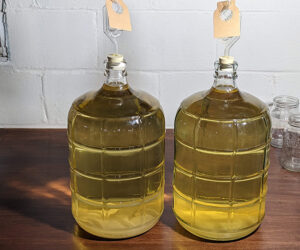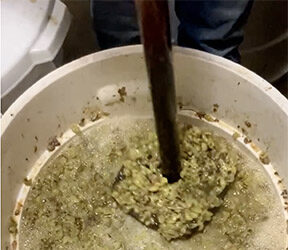When starting out as a home winemaker, many of our first attempts involve kits or juice as a base fermenting medium. While these can make some very nice homemade wines and absolve the winemaker of purchasing expensive processing equipment, there is nothing quite like making a wine from fresh grapes. A bit of internet research can lead you to a local retailer of wine grapes and products. But once you have found a local retailer, or possibly numerous options, how does one narrow down their search and find the best grapes to make their dream wine? To answer that, I’ve assembled seven critical points for home winemakers to consider when working with a grape supplier.
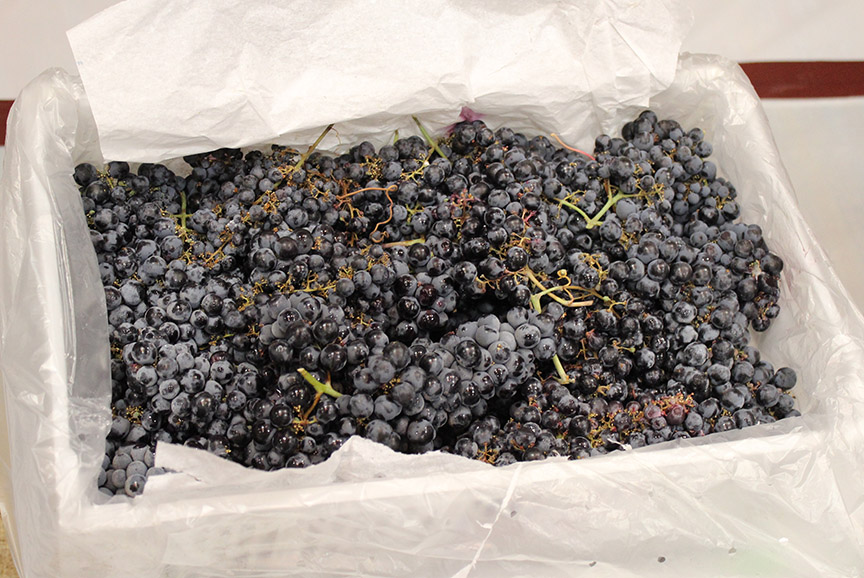
1. Try Example Wines
When planning out your next vintage of wines, the first and most obvious question is “What do I want to make?” Consider the varietal you would like to make and any potential blending grapes as well. A call to your local grape retailer at any point throughout the year should be able to procure you a list of grape varieties they can source and growing regions that they work with.
Once you have your menu of options in front of you, take a trip to your local wine shop and buy a few examples of your preferred varietal, ideally from growing regions that your local grape supplier can source from. Have some fun with it! It can be a great excuse for a tasting party with friends to contemplate your next vintage. Take notes on what growing American Viticultural Areas (AVAs) you prefer for that varietal so that you can share your preferences with your grape supplier. Cross reference your list of preferred growing regions with the list of regions and varietals from your grape supplier.
You can even look up the individual wines that you admire and prefer to see if the winemaker has posted any technical data sheets that may provide you with target pH and titratable acidity (TA) levels as well as oak treatments that can help you craft the style of wines you enjoy. As you call back the grape supplier with an order, you may be able to ask them for a sample of wine made from those grapes or a recommendation of a commercial label from the area they source from that you could use as a benchmark.
2. Use the Knowledge of the Brokerage as a Resource
Grape suppliers work with grapes as much as most vintners and often know the farmers personally. They understand the dynamic qualities of the grapes and how they can manifest into the finished wine. Explaining the style of the wine you would like to make and citing examples that you enjoy; the grape supplier can guide you to AVAs and varieties that may best achieve your winemaking goals. They may have tips on blending in other varieties to obtain a finished balance or complexity you seek, from better color, tannin structure, or acidity in the fermented wine to a more expressive aroma. Commercial label regulations require that a wine needs to be only 75% of a variety to be listed as such on the front label. A commercial supplier may have some tips and tricks about blending in small quantities of other varieties to help you best craft your dream wine.
A grape supplier has worked with many varieties and has also tried many different examples of finished wines from the grapes they source. Use them as a resource to aid you in making the best wine possible. Once you have found a grape supplier whom you know and trust, you can ask them throughout the year what varieties are looking good this year and if they have suggestions. They may have a more cost-effective, but equally delicious option. Calling early (2–3 months before harvest season) will allow you more time to use the supplier’s knowledge as a resource and get an early chance at premium grapes that sell quickly. Keep an open mind when selecting grapes — an experienced supplier may provide you with unique and surprising options.
It is crucial to find a knowledgeable grape supplier. They will be the first step in creating a good wine. I have been working with Musto Wine Grape Company for over a decade, previously as an employee and for the past few years as a customer, and I can attest that many of my commercially made wines are of excellent quality because they start with good grapes.
Speaking with Christina Musto-Quick on finding a good grape supplier, she shared this advice, “When you are on the hunt for a grape supplier, it’s like shopping for the perfect ingredients for your favorite recipe. You want to make sure you are getting the good stuff. It is essential to prioritize quality, reliability, and alignment with your winemaking goals. Look for suppliers with a solid reputation in the industry. Prioritize suppliers who prioritize quality assurance measures, such as vineyard management practices, grape selection criteria, and harvesting techniques. Look for a supplier that offers a wide selection of grape varieties to meet your winemaking preferences and production needs. Seek suppliers who prioritize open communication and collaboration. Consistency in grape quality and supply chain management is crucial for maintaining the integrity of your winemaking process. Partner with suppliers known for their reliability in delivering consistent, high-quality grapes year after year.”
3. Timing is Everything
I know it can be cliché, but timing really is everything. Communicate with your supplier to establish a timeline for the arrival of your grapes. I would highly recommend avoiding any planned vacations this time of year! Farming is greatly impacted by weather, and we all know Mother Nature to be a fickle thing. Many environmental factors can influence the timing of your grapes’ arrival. A heat spike for an extended period of 7–10 days pre-harvest can speed up the ripening process and send farmers into a frenzy to get their fruit off of the vine. A major storm rolling in with high winds, hail, or other unwanted precipitation can also rush fruit off of the vine.
It is a good practice to have flexibility in your schedule around harvest season in case grapes arrive early (or late). Cool temperatures, delays in the trucking industry, or delays in harvesting labor can all push back arrival times of your grapes. Keeping an open line of communication with your grape supplier and a reasonably flexible schedule will ensure you the best quality grapes possible. You don’t want your grapes sitting around, losing moisture content, and potentially beginning to spoil. It is imperative to pick them up as soon as possible when they come into season to discourage any microbial deterioration and ease your winemaking.
4. Renowned AVAs are Not Always Better
I realize this may be a “hot take” or a mildly controversial viewpoint, but if there is a certain varietal or style of wine that you are inclined to make, do not get too hung up on trying to source grapes from a glamorous growing region in hopes of making a champion wine. This is another important time when knowing and trusting your grape supplier is critical. A discussion with a grape supplier about your goals may prove to save you time, money, and futile efforts. By explaining the style of wine you are trying to make and asking for their geographic recommendations on AVAs, they may be able to steer you to an AVA that is new to you, but reputable for that varietal. They also may be able to offer you grapes from various regions and price points that will help you create the wine you desire without breaking the bank. Not every great wine is made from grapes grown in Napa or Sonoma. Discover the wonderful quality of grapes from the other tremendous, yet lesser-known, wine growing regions.
Musto-Quick, a third-generation grape supplier, is quick to point customers to one of her favorite AVAs she feels is up-and-coming in prestige and consistently growing high-quality wine grapes.
“Although many home winemakers may already be familiar with it, Suisun Valley remains one of California’s most underrated winemaking regions,” she said. “Established in 1982, Suisun Valley is among California’s oldest AVAs, situated just outside Napa. In fact, you could stand with one foot in Napa and the other in Suisun — it’s that close. Sharing similar soil compositions with Napa Valley and boasting over 28 grape varieties . . . Suisun Valley offers a rich tapestry of flavors waiting to be explored. Despite its high quality, this region hasn’t garnered the same recognition as its illustrious neighbors.”
5. Give International Grapes a Chance
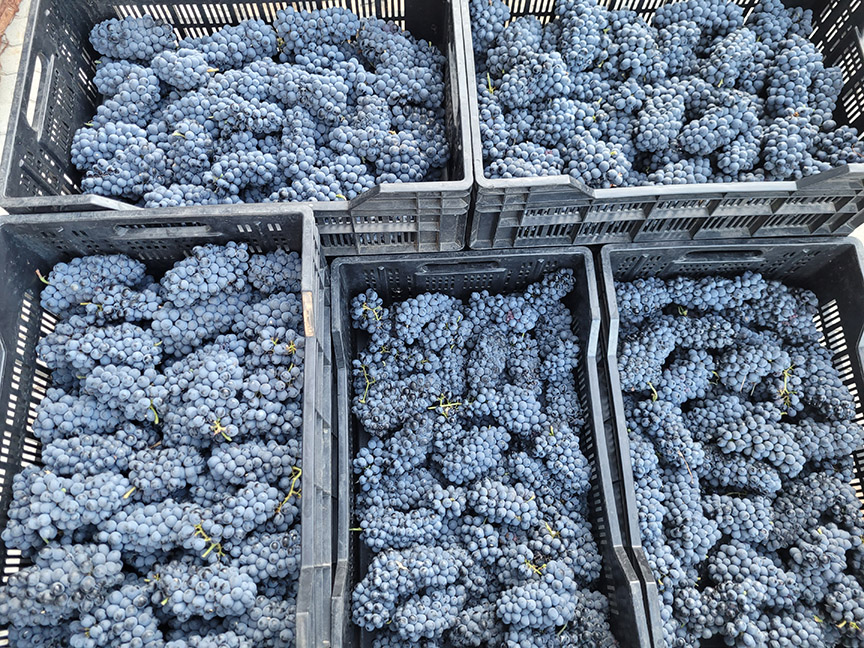
As not every great wine is made in Napa Valley, not every great wine is made in California or in the United States. Some grape suppliers may be able to obtain grapes from other countries as well. This greatly increases your potential as a winemaker to tailor your wines to your taste and also increases the number of times per year you can make wines from fresh produce.
Southern Hemisphere countries such as South Africa, Chile, Argentina, and Australia harvest their grapes in March and April, which gives Northern Hemisphere winemakers another harvest season to make wines from grapes. This can increase your flexibility in your timing and provide a chance to make wines from some unique varieties. Who doesn’t enjoy a nice Australian Shiraz or South African Pinotage? Now imagine having an opportunity to make a vintage of one!
6. Take a Trip – Visit the Brokerage in Person
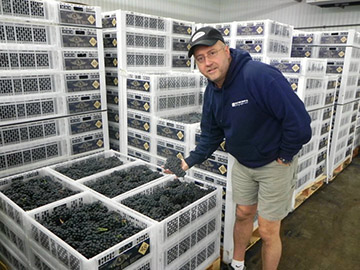
If time and distance allow, it can be very advantageous take a trip to your grape supplier. It is always nice to make a personal introduction and to cultivate a relationship with a vendor who will be supplying you with such a precious commodity. If you take the trouble to visit them in person, that will likely make a good impression that you take your winemaking seriously and, in turn, will have them try and provide you with the best grape resources possible. It is also good to check out their facilities to learn about how they store grapes upon arrival and make sure that cleanliness and sanitation standards are being met and maintained.
Often, grapes will have to sit in a large, refrigerated cooler while they wait for you to pick them up. Ensure that your grape supplier has coolers for the grapes as this will be the best weapon against spoilage. Look in the coolers and make sure they are clean and well-maintained. If grapes are stored in a dirty environment, this may be a way for negative microbes to hitch a ride home and into your home winery.
When purchasing fresh grapes in 36-pound (16-kg) lugs, there should be a sulfite pad in the bottom of the lug that will slowly release sulfite while the grapes are in transit to prevent mold growth. If the grapes are old, stacked improperly, or have been damaged, juice will leak onto these pads and eventually spoil. Pulling some grapes out of the lug and making sure that the pad is there, is largely devoid of juice, and smells neutral is another important quality check when picking up your fresh grapes. Making sure that the grapes will be stored properly and handled well will provide you with the best grapes to make your finest vintage.
7. Obtain your Ingredients Ahead of Time
Any good winemaker knows planning is key to a successful fermentation process. Evaluate your winemaking supplies 4–5 months before harvest season. Toss out any products that have been open for more than two years. Opened products should always be sealed in a jar or plastic container to reduce air contact and potential spoilage. It is helpful to write the date they were first opened to make this inventory and freshness check easier. Make a list of the ingredients that you will need to acquire and place an order well ahead of time. If you use a local shop to procure ingredients, ensure that you are getting fresh products by checking for an expiration or packaging date.
If you are able, consider buying directly from manufacturers such as BSG HandCraft, Scott Laboratories, Enartis, Lallemand, etc., to obtain the freshest products possible. You may be able to share larger packs of ingredients such as nutrients with winemaking friends. If you need a winemaking friend, there are quite a few online groups in various forms of social media and the American Wine Society. You can also find an amateur winemaking club directory at www.winemakermag.com/resource/club-directory.



